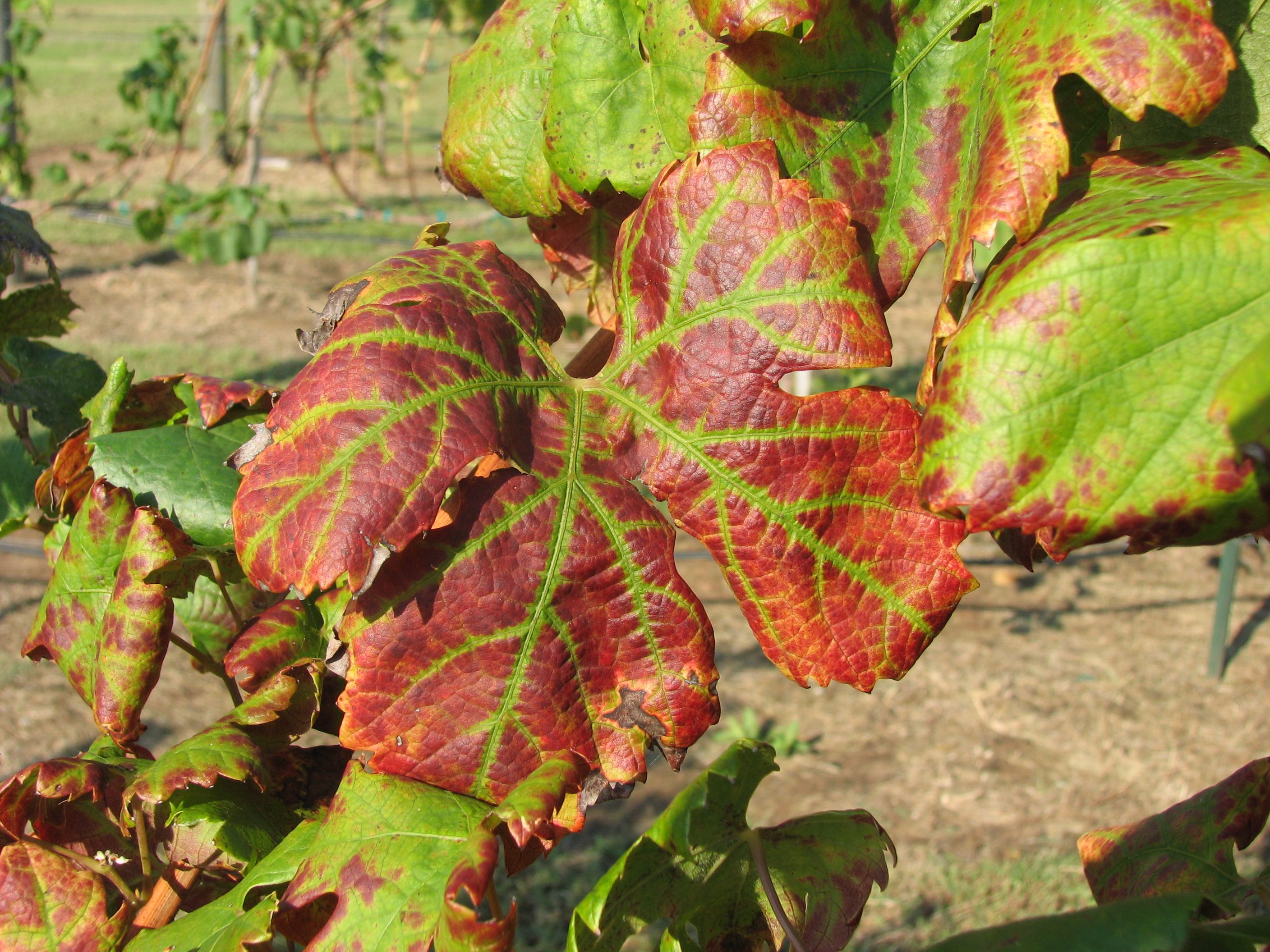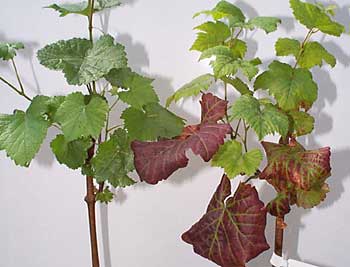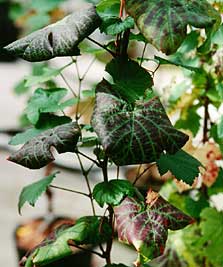Grapevine Leafroll Viruses
 Causal Agent
Causal Agent
Grapevine Leafroll-Associated Viruses (GLRaVs)
Hosts
The host range of the GLRaVs includes V. vinifera, American Vitis spp. and hybrids.
 Symptoms
Symptoms
Leafroll is probably the most widespread virus disease of grapevines. Leafroll symptoms are associated with at least nine different viruses that are referred to as Grapevine Leafroll-Associated Viruses (GLRaVs). The distinct viruses are referred to as GLRaV-1 through GLRaV-9. Laboratory ELISA tests are only commercially available for six GLRaVs. GLRaV-1 and GLRaV-3 are the most commonly found viruses in the group.
Grapevines infected with leafroll often show downward curling of the leaves and leaf
thickening. The leaves of red fruited varieties may turn red in late summer while
the 

Control
Growers should plant certified, disease-free plants. Pruning tools should be disinfected with a bleach solution (1 part household bleach, 9 parts water) between cuts. Infected plants should be removed and discarded.


